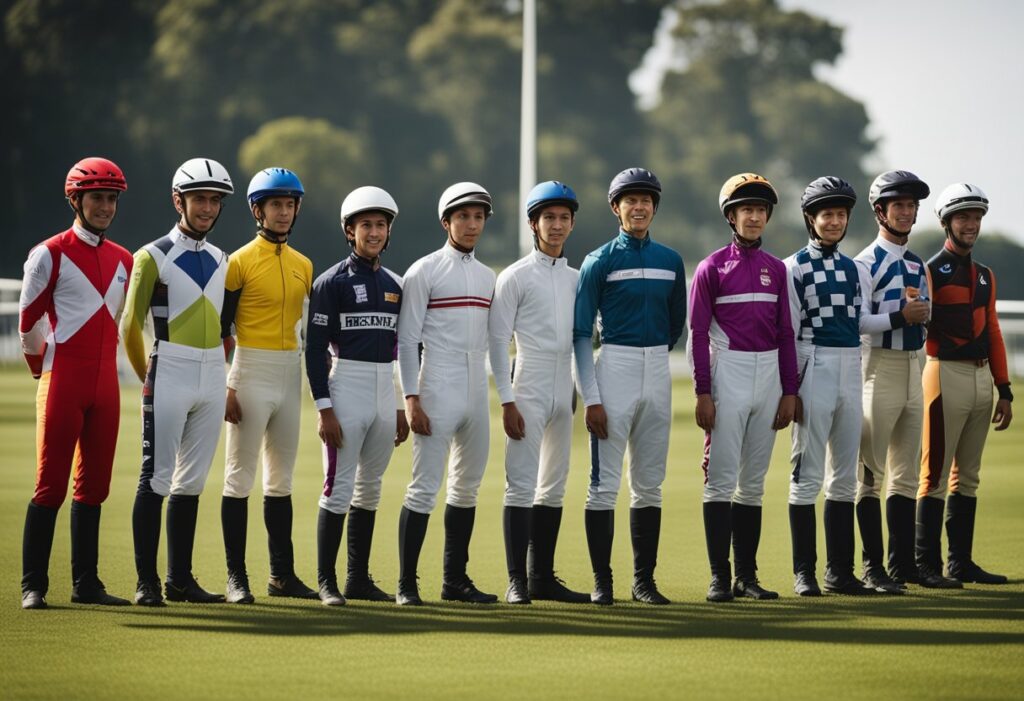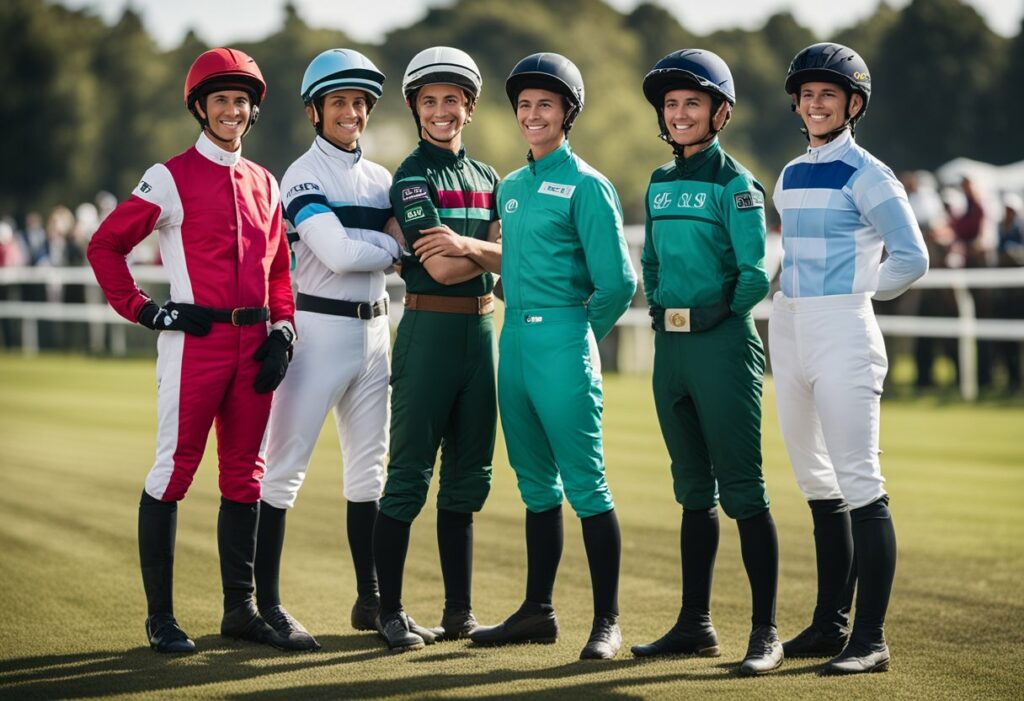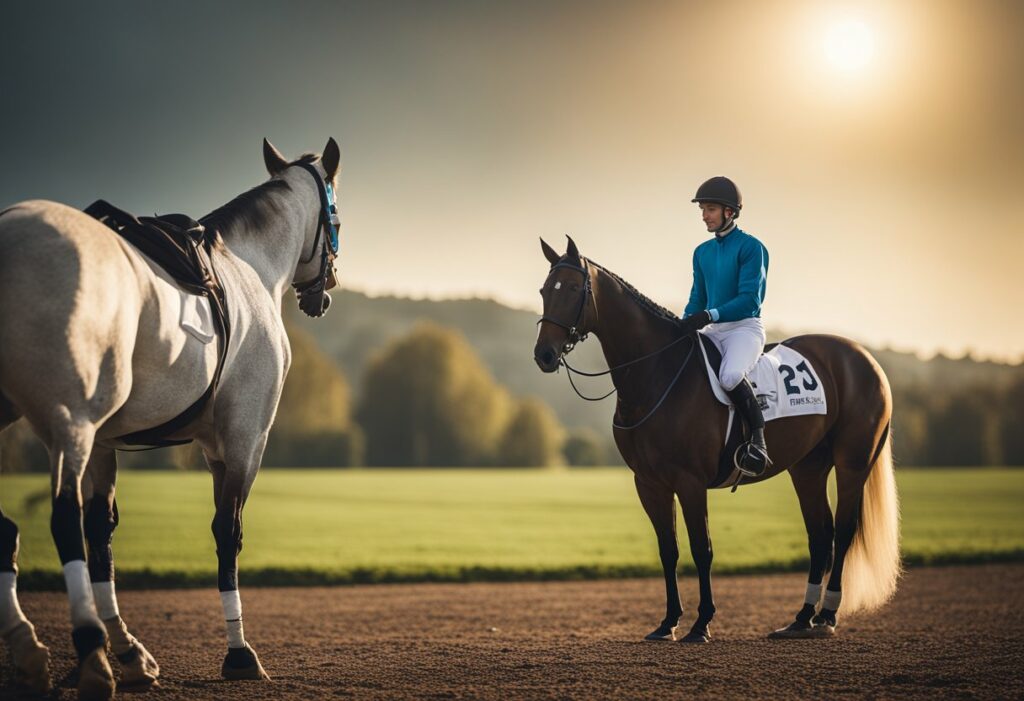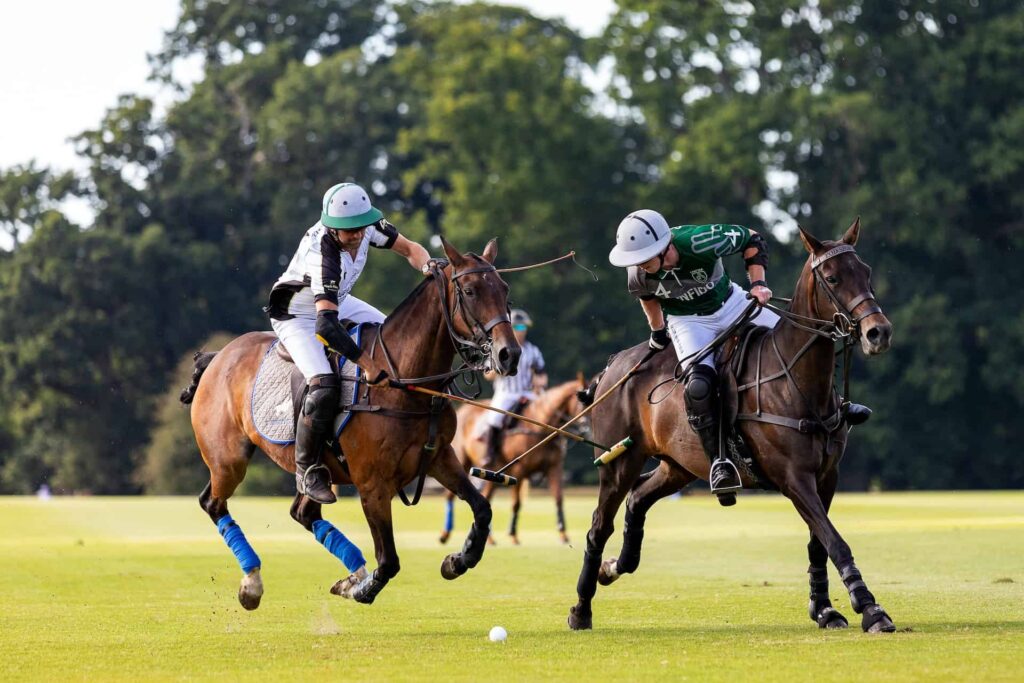In the world of horse racing, jockeys are known for their small stature, a physical attribute that’s nearly as critical to the sport as the horse’s speed and stamina. While there are no official average jockey height and weight limits, the demands of the sport naturally dictate a range that is conducive to both horse and rider success. The weight they carry is also limited, and this has an indirect correlation with how tall jockeys can be, as they need to maintain a weight that is both healthy for them and accommodates the weight regulations of racing. Typically, jump jockeys stand a bit taller than those racing on the flat, reflecting the different requirements of their respective racing styles.
Given that equine athletes carry the weight of their riders over large distances at high speeds, it’s clear that every pound matters. This weight, which the horses can safely carry, is a balance between the jockey’s physical well-being and the performance of the horse. For flat racing, where aerodynamics and lighter weight are more beneficial, jockeys usually exhibit shorter statures. Interestingly, while the occupation is dominated by men, women jockeys also compete at the highest levels, demonstrating that skill and expertise are not dictated by gender.
Key Takeaways
- Horse racing necessitates jockeys to have a smaller physical profile.
- Height and weight are essential as they affect horse performance and jockey well-being.
- Despite the physical demands, jockeying is inclusive regarding gender.
Physical Demands of Horse Jockeying
The role of a horse jockey requires high physical fitness and strength. Jockeys must have exceptional cardiovascular fitness due to the intense nature of horse racing. The sport calls for sustained intensity, demanding high levels of endurance to control a racing horse effectively.
Jockeys adopt a unique riding position known as the “martini” glass stance to guide their horse at speeds, which places extreme demands on their lower body strength and balance. The physical characteristics needed for jockeying are specific – jockeys are typically quite short, with a professional average height of around 5 feet 1 inch. This characteristic is important due to the stringent weight requirements imposed in the racing industry.
To meet the weight limits, jockeys often maintain low body fat percentages, usually around 5-10%. Maintaining such a weight can lead to significant health effects, as they must keep a rigorous diet and undergo regular weight checks. Horse trainers may also provide specific workout regimes to keep their jockeys physically fit.
| Aspect | Requirements |
|---|---|
| Cardiovascular Fitness | High |
| Muscle Strength | Professional average of 53.5 kilograms |
| Height | Average 5 feet 1 inch (155cm) |
| Weight | High for the race duration |
| Body Fat | 5-10% average |
| Endurance | High for race duration |
In summary, the demands on a horse jockey’s body are rigorous, necessitating a tailored approach to physical training and diet to achieve the necessary weight and fitness levels. These stringent physical requirements make sure jockeys can withstand the pressures of the race while driving their horse to peak performance.
Average Height and Weight of Jockeys
In the world of horse racing, jockeys are known for their relatively smaller stature when compared to athletes in other sports. The average height for a jockey ranges from about 4 feet 10 inches to 5 feet 6 inches. Among this spectrum, a commonly cited average is approximately 5 feet 2 inches. This specific height permits jockeys to meet certain physical demands of the sport while maintaining a low center of gravity, which is crucial for balance and control during races.
There is a weight limit imposed by horse racing authorities that aids in the well-being of the horses and the fairness of the competitions. The average weight of a jockey usually falls between 108 to 118 pounds. These requirements can vary based on the type of race and the conditions set by the racing commission.
While there are no explicit height requirements for jockeys, the stringent weight limits naturally restrict the height. Subsequently, it is rare to find tall jockeys competing at the professional level, as they struggle to meet the prescribed weight restrictions without compromising their health or performance.
In essence, while strength and athletic ability are indispensable, it is the unique combination of their lightweight and shorter height that equips jockeys to successfully compete in the physically demanding sport of horse racing.
Gender Differences in Jockeying
In the competitive world of horse racing, it’s crucial to understand how gender differences manifest in the physical requirements for jockeys. Specifically, both male and female jockeys must adhere to stringent weight requirements to compete effectively, with these standards varying slightly due to average physiological differences.
Average Height and Weight of Male Jockeys
Male jockeys typically have a weight range that they must maintain to be competitive. Weight requirements in the thoroughbred industry are often strict, requiring male jockeys to be light yet muscular enough to control a racehorse effectively. The average height is typically around 5 feet 2 inches to 5 feet 6 inches. Male jockeys often weigh between 108 to 118 pounds; however, the required weight can vary based on the race and the horse they are matched with.
Average Height and Weight of Female Jockeys
Female jockeys, while less represented in the top-tier professional races, share similar physical requirements as their male counterparts. They usually stand at an average height of 5 feet to 5 feet 5 inches. Their competitive weight range tends to coincide with that of male jockeys, generally expected to be from 105 to 115 pounds to align with race guidelines. Despite these similarities, sex differences are reflected in the broader range of acceptable weights for female jockeys due to natural differences in body composition.

Role of Trainers and Racing Authorities
Trainers and racing authorities play a pivotal role in shaping the careers of jockeys. They are responsible for the strict adherence to training regimens and compliance with weight limits and other regulations set by the racing commission.
Training Regimens for Jockeys
Effective training regimens are central to a jockey’s success and safety. Trainers develop comprehensive fitness programs to optimize a jockey’s weight and endurance. A typical regimen could involve a combination of cardiovascular workouts, strength training, and specialized exercises tailored to the needs of horse racing. Horse trainers work alongside fitness experts to help jockeys meet the physical demands of racing, often incorporating diet plans to stay within the prescribed weight limits.
Regulations and Oversight by Racing Commission
The Racing Commission enforces regulations that govern the sport, including jockey licensure and race day procedures. They set forth rules regarding permissible equipment, racing schedules, and the aforementioned weight restrictions for jockeys. Racing authorities regularly conduct reviews and updates to these rules, ensuring that safety standards evolve with the sport. They oversee the integrity of racing events, and trainers are expected to comply with these regulations or face penalties. The cooperation between trainers, jockeys, and racing authorities is necessary for the orderly and fair conduct of horse racing.
Racing Events and Height Impacts
In horse racing, a jockey’s height can play a significant role in their performance and suitability for different types of races. Different events may have varying expectations or requirements when it comes to the physical characteristics of a jockey.
Kentucky Derby and Jockey Heights
The Kentucky Derby is one of the most prestigious flat races in the United States, forming part of the Triple Crown. Jockeys competing in the Derby often have a height that allows them to maintain a lower weight to optimize the horse’s speed and endurance. The average horseracing jockey is often well below the national average for men and women, which is beneficial in flat racing scenarios.
Grand National and Jockey Requirements
The Grand National is a demanding race famous for its numerous and challenging obstacles. Jockeys participating in this event are typically taller than those in flat races. This height requirement is partially due to the need for more strength to control their mounts and durability to complete the longer and more grueling courses associated with National Hunt races.
Triple Crown Races and Physical Demands
Triple Crown races, which include the Kentucky Derby, Preakness Stakes, and Belmont Stakes, impose strenuous physical demands on both horse and jockey. Jockeys must possess particular physical characteristics that complement their racing strategy. While specific height requirements may not be mandated, the ideal jockey height is often conducive to a strategic advantage in these high-stakes competitions.
Related: What to Wear to a Horse Race
Risks and Health Concerns for Jockeys
Jockeys face significant health risks due to the physical demands of the sport and strict weight limits. Managing these issues is vital for their long-term health and performance.
Long-term Health Effects of Weight Management
Jockeys often adhere to strict weight requirements that can lead to severe methods of weight control, such as dehydration and calorie restriction. These practices may result in health effects like muscle loss and nutritional deficiencies. Repeated cycles of weight gain and loss can also accelerate tooth erosion and induce frequent vomiting.
Injury Risks on and off the Race Track
Racing poses inherent injury risks. Falls can lead to concussions and fractures, which, in the worst cases, can be life-altering. Even off the track, jockeys maintain rigorous fitness regimes that could potentially lead to overuse injuries, further impacting their career longevity.
Mental Health and Stress Factors
The combination of maintaining weight limits, the potential for injuries, and the high stakes of competition contribute to the stress jockeys experience. This environment can put significant pressure on their mental health, necessitating an awareness and proactive handling of stress to safeguard their overall well-being.
Weight Management Techniques
Jockeys are required to maintain a body weight that meets specific weight requirements for competitive racing. They employ various techniques to qualify for weight limits, some of which carry significant health risks.
Diet and Nutrition for Jockeys
Jockeys often follow strict dietary regimens to meet weight requirements. Their diets are typically high in protein and low in calories, helping them to maintain muscle mass while reducing body fat. They may also practice portion control and meal timing to optimize their metabolism without leading to weight gain. Nonetheless, finding a balance that avoids nutritional deficiencies is critical for their health and performance.
Use of Saunas and Diuretics
To shed pounds quickly, jockeys may use saunas to induce sweat-induced weight loss, a temporary reduction largely from water loss, which can lead to dehydration. Diuretics are also used at times to reduce water weight. These substances increase urination, but they can be dangerous, potentially leading to dehydration and electrolyte imbalances.
Flipping and Other Extreme Measures
Some jockeys resort to flipping, a slang term for self-induced vomiting, to meet weight limits— a practice that can have serious health consequences. Others may use laxatives or skip meals entirely. These extreme diet methods carry risks such as dehydration, electrolyte imbalances, and chronic gastrointestinal damage. The racing industry has ongoing concerns about the health impacts of such practices.
Equipment and Racing Gear
In horse racing, the efficiency of jockeys is influenced by their equipment weight, which impacts their riding performance. The customization of gear and maintenance items aids in the aesthetic appeal and the well-being of the horse.
Impact of Equipment Weight on Jockeys
The weight of a jockey’s equipment is crucial as it must be precisely calibrated to meet weight limits for races. Regulations stipulate that total tack weight—comprising the saddle, stirrups, and saddle pad—shouldn’t exceed a certain threshold. The saddle is usually the lightest possible while still providing safety and control, typically weighing less than two pounds.
Jockey Silks and Gear Customization
Jockey silks are the colorful and patterned shirts worn by horse jockeys that identify the horse’s owner and can be considered a form of branding. They are made from lightweight materials like silk or synthetic fabrics to minimize encumbrance. Gear customization often extends to helmets and goggles, which are mandatory for safety but can also be personalized.
Saddle Pad and Horse Care Items
The saddle pad acts as a cushion between the horse’s back and the saddle, protecting the horse from friction and pressure points. Horse care items, including brushes and hoof picks, are necessary for the horse’s grooming and health, contributing to its peak performance. The durability and quality of these items are paramount, as they directly affect the horse’s comfort during the race.
The Business of Being a Jockey
The path to becoming a jockey is marked by physical demands, financial variability, and relationships with key players in the horse racing industry.
Jockey as a Career Path
A career as a jockey is a distinctive choice, one that often entails a self-employed status and demands a high degree of discipline and physical fitness. Jockeys must maintain a strict weight limit, which, for many, means staying significantly below the average weight of adults. This aspect of the career can dictate their day-to-day lifestyle, affecting diet and health.
Financial Aspects and Winnings
Financially, a jockey’s earnings can fluctuate greatly. They typically receive a fee for each race and a percentage of the winnings if the horse places well. Top jockeys can obtain lucrative endorsements. Their income can be as variable as their racing success, with no guaranteed salaries.
- Race fees: Payment for riding in each race.
- Prize money: A cut from the winnings if the horse performs well.
- Endorsements: Additional income for high-profile jockeys.
Relationships with Racehorse Owners and Trainers
A jockey’s success in the industry is heavily reliant on their relationships with racehorse owners and horse trainers. These professionals assess the skills of jockeys and their compatibility with different horses. Strong, positive relationships can lead to more opportunities to ride winning horses and, therefore, to higher earnings and a more stable career.
- Racehorse Owners: They determine which jockey rides their horses.
- Horse Trainers: They prepare horses for races and often recommend jockeys.

Notable Jockeys in History
The world of horse racing has seen many outstanding jockeys, with some renowned for their exceptional height as well as remarkable achievements. Here is a selection of such individuals who have made significant contributions to the sport.
Profiles of Tall Jockeys
Stuart Brown and Kenneth Glover are distinguished for their noteworthy stature in the history of horse racing. Standing tall, these jockeys defy the common perception of the typical jockey’s height, demonstrating that height need not be a barrier to success on the racetrack.
Record Holders and Their Heights
Among the tallest jockeys in history, several have set records that are yet to be surpassed. For instance, certain tall jockeys have emerged as victors in prestigious races, their height appearing to offer no disadvantage. The record for the tallest jockey ever to win critical races like the Grand National helps dispel the myth that a jockey’s height is inversely proportional to their ability to secure wins.
Women in Jockeying and Their Achievements
The achievements of female jockeys have often been remarkable, with many overcoming sizable obstacles to rise to prominence in a traditionally male-dominated sport. These women have not only matched but in some instances, surpassed the accomplishments of their male counterparts, securing their place in horse racing history through skill, determination, and a profound passion for the sport.
Frequently Asked Questions
In the competitive world of horse racing, jockey height plays a significant role. Here are some common inquiries regarding the stature of professional jockeys.
What is the height range for professional jockeys?
Professional jockeys typically stand between 4’10” and 5’6″ tall. This height range is considered ideal for maintaining the balance and control necessary for horse racing.
Are height and weight regulations different for male and female jockeys?
While individual race tracks might have their own rules, generally there are no separate height and weight regulations for male and female jockeys. Both genders adhere to the same requirements for competition fairness.
What are the physical requirements to become a professional jockey?
Professional jockeys must possess a unique combination of low body weight, exceptional balance, and strength. Their weight usually falls between 108 to 118 pounds, allowing them to meet the strict weight limits for races.
How do jockeys maintain their weight for racing?
Jockeys maintain their racing weight through rigorous diet and exercise regimens. They may also resort to sauna usage and dehydration techniques to meet weight limits before races, although these practices are carefully monitored.
Who are some of the most well-known jockeys and their heights?
Famous jockeys like Laffit Pincay Jr. and Bill Shoemaker were known for their impressive track records and compact statures, standing around 5’1″ and 4’11” respectively.
How does a jockey’s height impact their racing strategy and success?
A jockey’s height affects their center of gravity and ability to maneuver the horse. A shorter stature can offer a lower center of gravity, facilitating better balance and control at high speeds, which are both crucial for racing strategy and success.
Last Updated on November 25, 2023 by Nate Dewsbury



